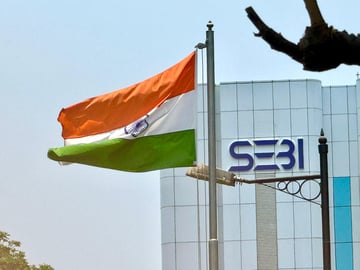SEBI is now focusing on sectoral and theme funds

Sectoral and thematic scheme flows have grown to the point that they now account for more than one-third of monthly net equity flows. With the exception of close-ended and interval schemes, the Securities and Exchange Board of India suggested expanding the public disclosure of stress tests for all equity schemes.
An uncommon suggestion in the Securities and Exchange Board of India’s most recent consultation document on skin-in-the-game proposals for AMC personnel is to extend the public disclosure of stress tests for all equity schemes, with the exception of close-ended and interval schemes.
As of right now, the markets regulator requires that small and midcap schemes’ stress tests be disclosed on the AMFI and AMC websites once a month. Following the sharp increase in small and midcap shares and the spike in inflows into these schemes, the disclosure requirement was implemented.
The Association of Mutual Funds of India reports that since April 2023, net inflows into equity schemes from retail investors have totaled Rs 3.88 lakh billion. The rise in sectoral and thematic schemes introduced by numerous fund firms has further solidified these inflows.
The mutual fund industry has introduced 68 new fund offers under the sectoral and thematic categories since April 2023; this represents 60% of all active equity NFOs introduced since that time.
The flows into these schemes have somewhat returned to normal since then. Furthermore, the recent decline in small and midcap equities has guaranteed relatively modest gains. However, sectoral and thematic scheme flows have already grown to the point where they now account for more than one-third of monthly net equity flows.
Since the impact on net asset value is directly related to the level of volatility and exposure, this type of lack of exposure caps puts investor money at risk. For example, the NAV of the HDFC Defence Fund would be significantly impacted if BEL shares dropped more than 5% in a single week. Please take note that many other sectors schemes have comparable techniques, and the HDFC MF scheme is merely being used as an example. *In addition, the scheme will have to sell off its most liquid equities first during extraordinary redemption occurrences. This can result in significant declines in a significant amount of the Although the findings are confidential.
However, The largest risk element for investors is the significant flexibility granted to fund managers in sectoral and thematic schemes, which frequently results in outperformance. Unlike the majority of actively managed equity schemes, which have a 10% limit per stock, these schemes do not have a cap on stock exposure. For instance, Bharat Electronics Ltd. received 19.5% of the HDFC Defence Fund at the end of September, while Hindustan Aeronautics Ltd. received 18%.(approx ) To be clear, this is not a critique of the scheme’s approach.